How to Actually Deep Clean Your Mattress (The Pro’s No-Nonsense Guide)
After well over a decade in the upholstery and textile cleaning game, I’ve pretty much seen it all. But you know the one thing people ask about more than anything else? The mattress. And it makes perfect sense. We spend a third of our lives on these things, but when it comes to cleaning them, most of us are completely in the dark.
In this article
So, let’s get one thing straight right away: this is not a five-minute job. To do it right, you need patience and the proper technique. I can’t tell you how many mattresses I’ve seen damaged by folks who meant well but used too much water or the wrong cleaner. My goal here is to walk you through the method the pros use, so you can get it done right, protect your mattress, and get a healthier night’s sleep.
Heads up! You’ll want to block out a good chunk of the day for this. Think somewhere in the 8- to 10-hour range. But don’t let that scare you—most of that is just drying time! The actual work is just a couple of hours.
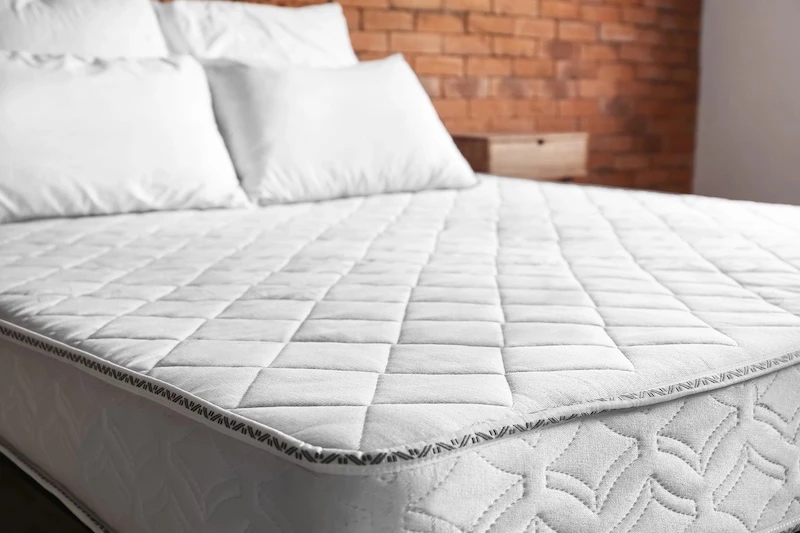
First, Know What You’re Working With
Before you even think about cleaning, you have to know what your mattress is made of. Slapping the same cleaner on a memory foam mattress that you’d use on an old-school innerspring is a recipe for disaster. They’re all different.
- Innerspring: This is your classic mattress with steel coils inside. They’re pretty tough and can handle a little moisture, but all that empty space inside is a magnet for dust and allergens. The big no-no here is letting water pool, so good airflow is your best friend.
- Memory Foam: Honestly, these are like giant sponges. They’re made of a dense polyurethane foam that will trap any liquid you put on it. The absolute critical mistake is soaking memory foam. The moisture gets trapped deep inside, can take an eternity to dry, and becomes a five-star resort for mold. Seriously, I’ve had to tell people to throw out mattresses that were ruined this way.
- Latex: This foam is a bit more breathable than memory foam, which is great. But it can be sensitive to harsh chemicals. The wrong cleaner can make the latex brittle and cause it to crumble over time. The key here is to stick with gentle, pH-neutral cleaners.
- Hybrid: These are a mix, usually with innerspring coils on the bottom and layers of foam or latex on top. You have to treat them like the most sensitive part, which is the foam top. So again, less water is more.
By the way, check the tag on the mattress. Sometimes you’ll find cleaning codes like “W” (water-based cleaner is okay) or “S” (solvent-based only). It’s more common on sofas, but it’s a good clue if you find one.
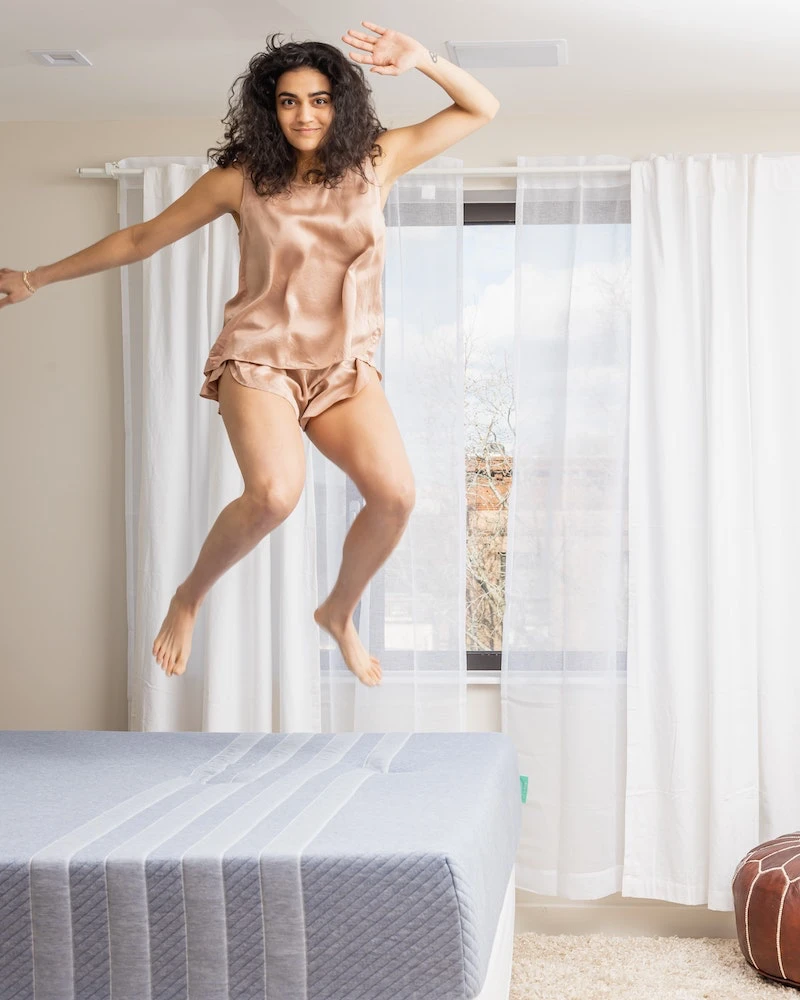
Your Shopping List: What This Will Actually Cost
You don’t need a truck full of fancy gear, but the right tools make all the difference. Here’s what you should grab, and what you can expect to spend. All in, you’re probably looking at around $40 to $60 for everything if you don’t already have it.
- A Vacuum with a HEPA Filter. This is non-negotiable for a deep clean. A regular vacuum just spits the tiniest allergens back into the air. A High-Efficiency Particulate Air (HEPA) filter actually traps them. Don’t own one? A quick tip: You can often rent one from a local hardware store like Home Depot for about $30 a day. It’s worth it.
- Enzyme Cleaner. This is your secret weapon for organic stains (sweat, urine, blood, etc.). It uses enzymes to literally eat the proteins in the stain. You can find a good bottle from brands like Rocco & Roxie or Nature’s Miracle for $15 to $25 online or at a pet store.
- Baking Soda. A big box of it. It’s an amazing natural deodorizer and helps absorb moisture and oils. Best of all, it only costs a couple of bucks.
- Clean, White Microfiber Cloths. And they must be white. I learned this the hard way a long time ago—colored cloths can bleed dye when they get wet, giving you a brand new stain to deal with. A pack of these is usually under $10.
- Isopropyl Alcohol (70%). A cheap and effective sanitizer that evaporates way faster than water. Perfect for a final disinfecting mist.
- Cornstarch or Dish Soap. We’ll get to this in a bit, but these are your go-to items for greasy stains. You probably already have them.
And what to AVOID: Stay away from bleach, ammonia-based products, or standard carpet cleaners. They’re all way too harsh and can damage the fabric and foam. And please, whatever you do, don’t use a hot iron or a regular garment steamer. They can melt the fibers or pump way too much water into the mattress.
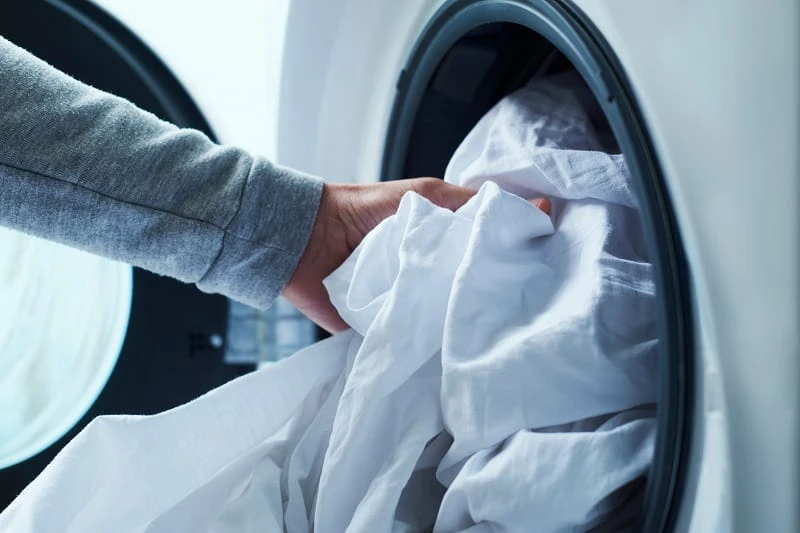
The Deep Cleaning Method: Step-by-Step
Alright, let’s get to work. Pick a nice, dry day if you can, and start in the morning to give your mattress the whole day to air out.
Step 1: Strip and Inspect
Take everything off the bed—sheets, protectors, toppers, everything. Get it all in the wash on the hottest setting the fabric can handle to kill off dust mites. While that’s running, take a good, hard look at the bare mattress. If you see any signs of bed bugs (little reddish-brown spots) or significant mold, just stop. Bed bugs need a licensed pro, and a moldy mattress is a health hazard that should be replaced.
Step 2: The All-Important Vacuuming
I tell every new person I train that 80% of cleaning is just removing the dry stuff first. If you add liquid to a mattress full of dust and dead skin, you’re just making mud. Use your HEPA vacuum with the upholstery attachment and go over every single inch. Press down firmly and work in a grid—top to bottom, then side to side. Then, switch to the crevice tool and get deep into the seams and tufts. That’s where all the gunk loves to hide.
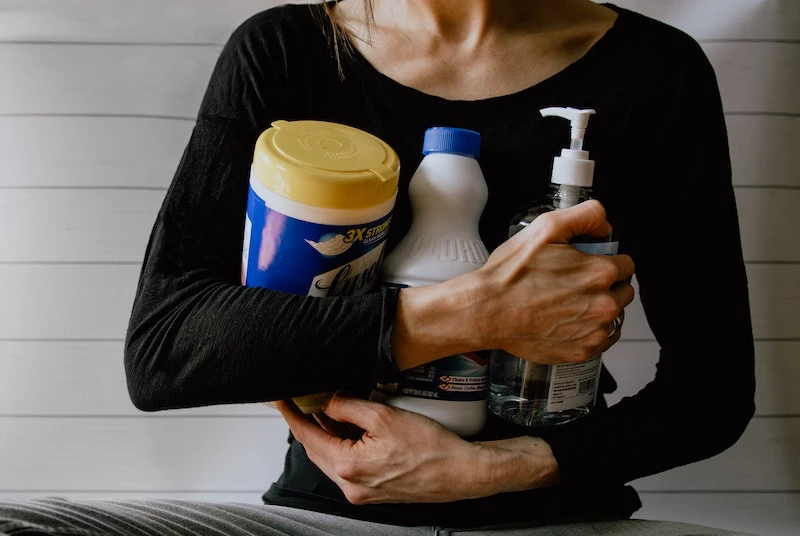
Step 3: A Pro’s Guide to Different Stains
The golden rule here is to never spray cleaner directly onto the mattress. Always spray it on your white cloth first to control the moisture. Blot, don’t scrub!
- For Biological Stains (Sweat, Urine, Pet Accidents): This is where your enzyme cleaner shines. Dampen your cloth with it and blot the stain, working from the outside in. Let it sit for about 15-30 minutes so the enzymes can do their work. Then, take a new cloth dampened with a little cold water and blot again to
Inspiration:
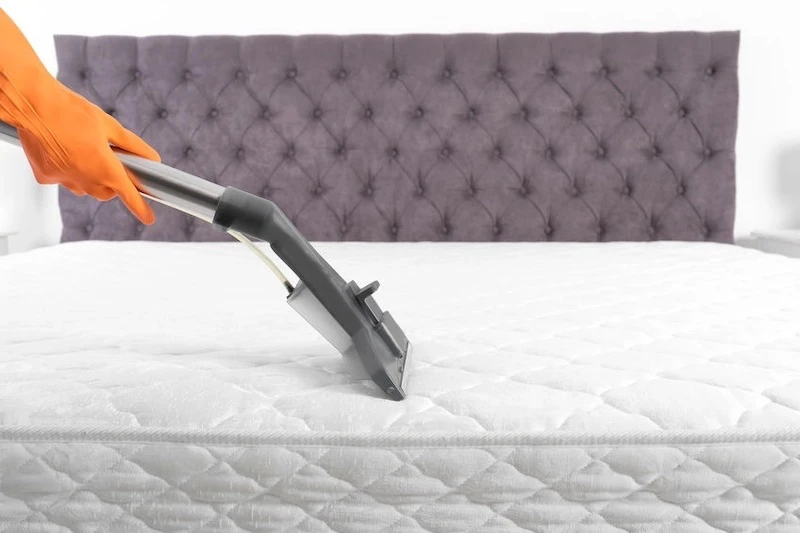
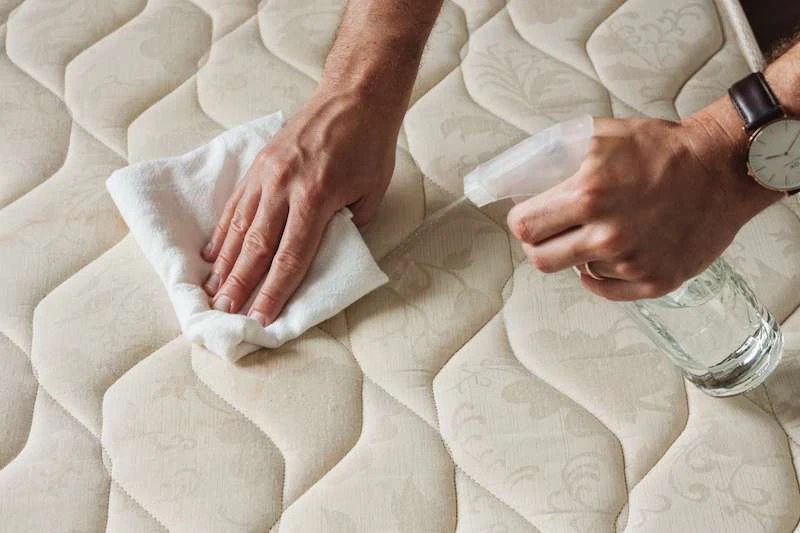
What’s the professional secret for stubborn organic stains like sweat or pet accidents?
For these, a simple soap solution won’t cut it. The game-changer is an enzyme cleaner. Brands like Nature’s Miracle or Rocco & Roxie Supply Co. use beneficial bacteria and enzymes to physically break down the proteins in the stain, completely eliminating the spot and the odor, not just masking it. Remember the golden rule: spray lightly, blot immediately, and never, ever soak the foam.
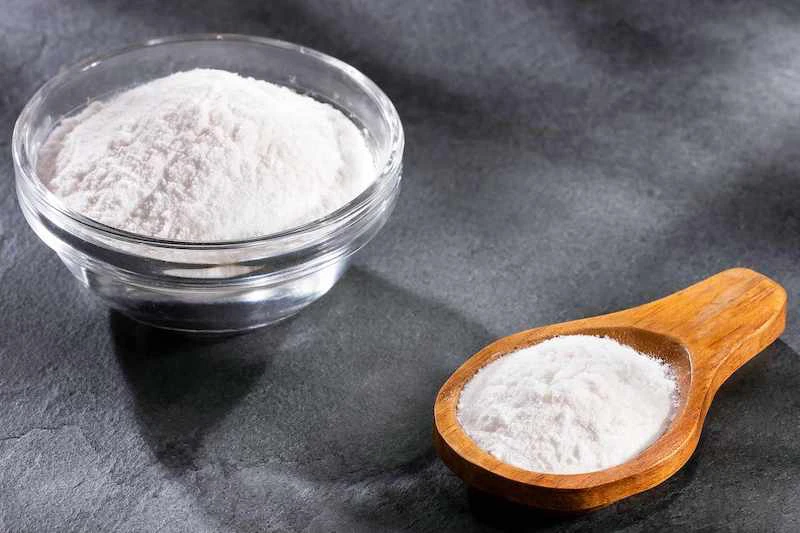
The average used mattress can house anywhere from 100,000 to 10 million dust mites.
This unsettling fact is why deep cleaning is fundamentally a health routine. These microscopic creatures and their waste are a major trigger for allergies and asthma. A thorough vacuuming and cleaning physically removes the bulk of this colony, drastically improving the air quality right where you breathe all night long.
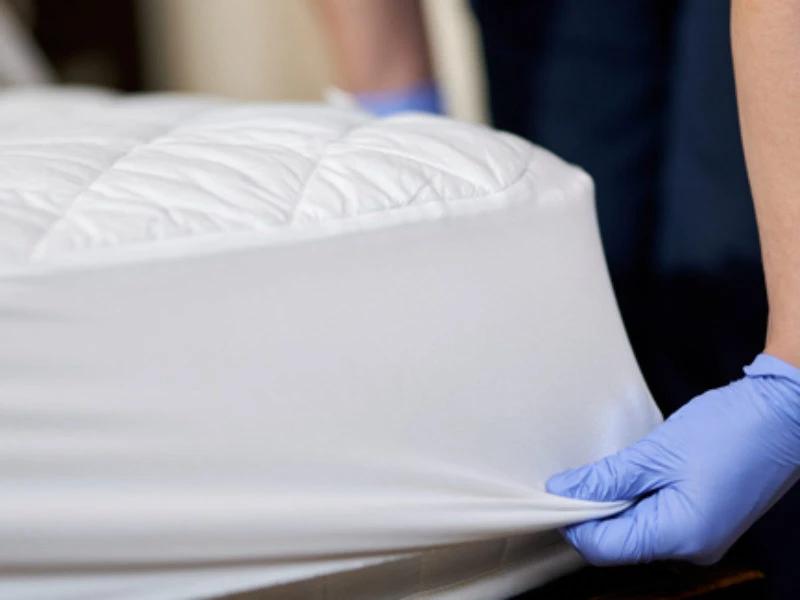
A common mistake: Dousing the mattress in fabric freshener or essential oils for that ‘clean’ smell. Resist the urge. These products often leave an oily residue that can attract more dirt, and concentrated fragrances can become cloying or irritating when you’re sleeping on them for eight hours. For deodorizing, plain, unscented baking soda is your safest and most effective bet.
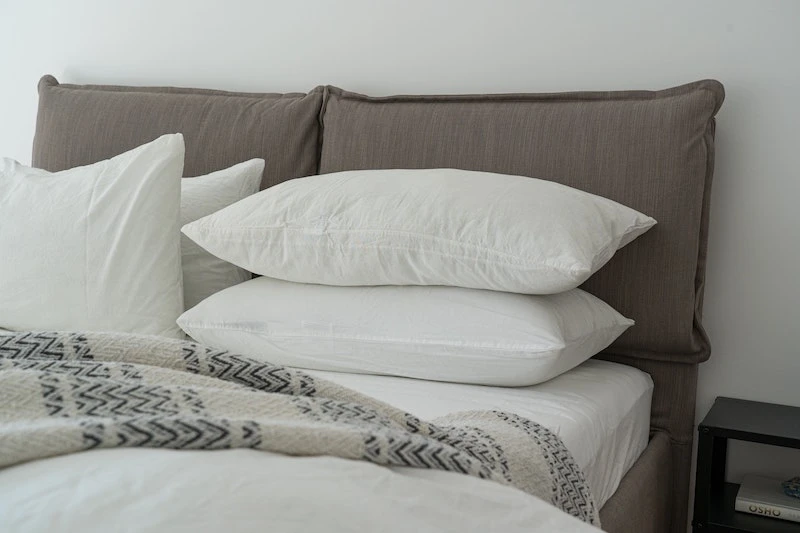
When it comes to vacuuming, don’t just use any old attachment. The hero here is your vacuum’s upholstery tool—the wide, flat head, often with a felt strip. It’s specifically engineered to apply powerful, direct suction on fabric without pilling or damage, pulling out far more dust, dander, and allergens than a standard brush or crevice tool.
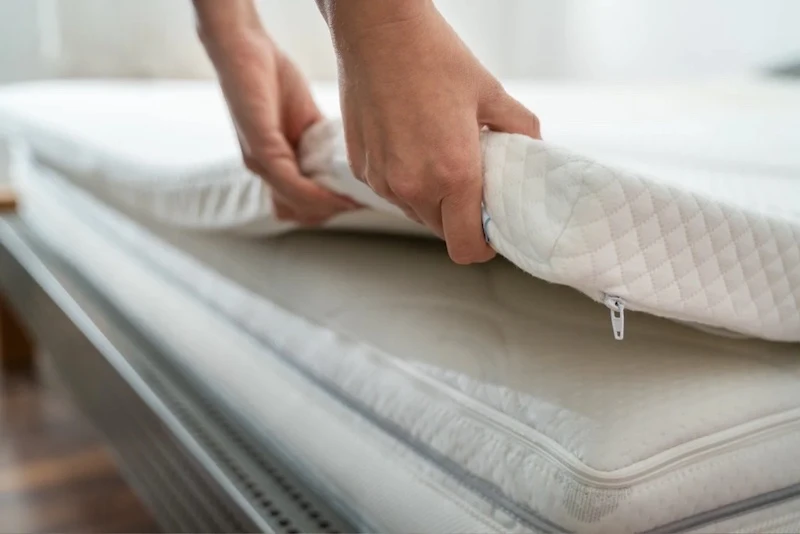
Keep that deep-clean feeling longer with a few simple habits. These small actions make a huge difference in mattress hygiene and longevity.
- Aerate daily by folding your duvet back for at least an hour before making the bed.
- Wash your sheets weekly in hot water to kill germs and dust mites.
- Invest in a quality waterproof and breathable mattress protector, like those from Purple or Casper. It’s the single best defense against future spills and sweat.
Memory Foam: This material is like a dense sponge, so getting it wet is the cardinal sin. It traps moisture deep inside, creating a perfect breeding ground for mold and mildew.
Latex: While more breathable, latex can be damaged by harsh chemicals or solvents. Stick to pH-neutral, mild cleaners to prevent the material from becoming brittle over time.
The key for both is minimal moisture and gentle, targeted cleaning.










